Forest fragmentation influences the diet of cichlids Apistogramma agassizii (Steindachner, 1875) and Aequidens tetramerus (Heckel, 1840) (Actinopterygii: Cichliformes) in streams of the Western Amazon
A fragmentação florestal influencia a dieta dos ciclídeos, Apistogramma agassizii (Steindachner, 1875) e Aequidens tetramerus (Heckel, 1840) (Actinopterygii: Cichliformes) em riachos da Amazônia Ocidental
Lucena Rocha Virgilio; Cleyton Holanda de Brito; Monik da Silveira Suçuarana; Lisandro Juno Soares Vieira
Abstract
Keywords
Resumo
Resumo::
Palavras-chave
References
ANDERSON, M.J., GORLEY, R.N. and CLARKE, K.R., 2008.
BARRELLA, W., PETRERE, J.R.M., SMITH, W.S. and MONTAG, L.F.A. As relações entre as matas ciliares os rios e os peixes. In: R.R. RODRIGUES and H.F. LEITÃO FILHO, eds.
BÜHRNHEIM, C.M. Heterogeneidade de habitats: rasos x fundos em assembléias de peixes de igarapés de terra firme na Amazônia Central, Brasil.
BURRESS, E.D., DUARTE, A., SERRA, W.S., GANGLOFF, M.M. and SIEFFERMAN, L. Species‐specific ontogenetic diet shifts among Neotropical Crenicichla: using stable isotopes and tissue stoichiometry.
CALLISTO, M., MORETTI, M. and GOULART, M. Macroinvertebrados bentônicos como ferramenta para avaliar a saúde de riachos.
CARDILLO, M., MACE, G.M., JONES, K.E., BIELBY, J., BININDA-EMONDS, O.R.P., SECHREST, W., ORME, C.D.L. and PURVIS, A. Multiple causes of high extinction risk in large mammal species.
CARDOSO, A.C. and COUCEIRO, S.R.M. Insects in the diet of fish from Amazonian streams, in western Pará, Brazil.
CASATTI, L., LANGEANI, F. and FERREIRA, C.P. Effects of physical habitat degradation on the stream fish assemblage structure in a pasture region.
CASATTI, L., TERESA, F.B., GONÇALVES-SOUZA, T., BESSA, E., MANZOTTI, A.R., GONÇALVES, C.D.S. and ZENI, J.D.O. From forests to cattail: how does the riparian zone influence stream fish?
CASTELLO, L., MCGRATH, D.G., HESS, L.L., COE, M.T., LEFEBVRE, P.A., PETRY, P., MACEDO, M.N., RENÓ, V.F. and ARANTES, C.C. The vulnerability of Amazon freshwater ecosystems.
CENEVIVA-BASTOS, M. and CASATTI, L. Oportunismo alimentar de
CHAN, E.K., ZHANG, Y. and DUDGEON, D. Arthropod ‘rain’into tropical streams: the importance of intact riparian forest and influences on fish diets.
COSTA, I.D.D. and SOARES, M.O. The seasonal diet of
DELARIVA, R.L., HAHN, N.S. and KASHIWAQUI, E.A.L. Diet and trophic structure of the fish fauna in a subtropical ecosystem: Impoundment effects.
EVA, H.D., BELWARD, A.S., DE MIRANDA, E.E., DI BELLA, C.M., GOND, V., HUBER, O., JONE, S., SGRENZAROLI, M. and FRITZ, S.A. Land cover map of South America.
FERREIRA, A., GERHARD, P. and CYRINO, J.E.P. Diet of
FERREIRA, M.C., BEGOT, T.O., DA SILVEIRA PRUDENTE, B., JUEN, L. and DE ASSIS MONTAG, L.F. Effects of oil palm plantations on habitat structure and fish assemblages in Amazon streams.
FONSECA, D.A. Aspectos da climatologia do Acre, Brasil, com base no intervalo 1971-2000.
GOTELLI, N.J. and ENTSMINGER, G.L.
HENRY, R.
HYNES, H.B.N. The food of fresh-water sticklebacks (
JUNK, W.J. Aquatic habitats in Amazonia.
KANDZIORA, M., BURKHARD, B. and MÜLLER, F. Interactions of ecosystem properties. ecosystem integrity and ecosystem service indicators - A theoretical matrix exercise.
KAWAKAMI, E. and VAZZOLER, G. Método gráfico e estimativa de índice alimentar aplicado no estudo de alimentação de peixes.
KEINATH, D.A., DOAK, D.F., HODGES, K.E., PRUGH, L.R., FAGAN, W., SEKERCIOGLU, C.H., BUCHART, S.H.M. and KAUFFMAN, M.A. Global analysis of traits predicting species sensitivity to habitat fragmentation.
LIEDKE, A.M., BARNECHE, D.R., FERREIRA, C.E., SEGAL, B., NUNES, L.T., BURIGO, A.P. and FLOETER, S.R. Abundance, diet, foraging and nutritional condition of the banded butterflyfish (
LÓPEZ-FERNÁNDEZ, H., WINEMILLER, K.O. and HONEYCUTT, R.L. Multilocus phylogeny and rapid radiations in Neotropical cichlid fishes (Perciformes: Cichlidae: Cichlinae).
LORION, C.M. and KENNEDY, B.P. Riparian forest buffers mitigate the effects of deforestation on fish assemblages in tropical headwater streams.
MAZZONI, R. and IGLESIAS‐RIOS, R. Environmentally related life history variations in
MORATO, E.F., MARTINS, R.P. and DRUMOND, P.M. Diversidade e composição da fauna de vespas e abelhas solitárias do estado do Acre. Amazônia Sul–Ocidental. In: P.M. DRUMOND.
NEWMARK, W.D. Tropical forest fragmentation and the local extinction of understory birds in the eastern Usambara mountains. Tanzania.
PIANKA, E.R. The structure of lizard communities.
PURVIS, A., CARDILLO, M., GRENYER, R. and COLLEN, B. Correlates of extinction risk: phylogeny biology threat and scale. In: A. PURVIS, J.L. GITTLEMAN and T.M. BROOKS, eds.
REIS, R.E., ALBERT, J.S., DI DARIO, F., MINCARONE, M.M., PETRY, P. and ROCHA, L.A. Fish biodiversity and conservation in South America.
REIS, R.E., KULLANDER, S.O. and FERRARIS, C.J., 2003.
RIBEIRO, A.R., BIAGIONI, R.C. and SMITH, W.S. Study of the natural diet of the fish fauna of a centenary reservoir. São Paulo. Brazil.
ROSSARO, B. Factors that determine Chironomidae species distribuition in fresh waters.
SABINO, J. and ZUANON, J.A. Stream fish assemblage in central Amazonia: distribution activity patterns and feeding behavior.
SAMPAIO, A.L.A. and GOULART, E. Ciclídeos neotropicais: ecomorfologia trófica.
SCHNEIDER, M., AQUINO, P.D.P.U., SILVA, M.J.M. and FONSECA, C.P. Trophic structure of a fish community in Bananal stream subbasin in Brasília National Park, Cerrado biome (Brazilian Savanna), DF.
SOUZA, R.G. and LIMA-JUNIOR, S.E. Influence of environmental quality on the diet of
VELASCO GOMEZ, M.D., BEUCHLE, R., SHIMABUKURO, Y., GRECCHI, R., SIMONETTI, D., EVA, H.D. and ACHARD, F. Long-term perspective on deforestation rates in the Brazilian Amazon.
VIRGILIO, L.R., RAMALHO, W.P., DA SILVA, S.J.C.B., SUÇUARANA, M.S., DE BRITO, C.H. and VIEIRA, L.J.S. Does riparian vegetation affect fish assemblage? A longitudinal gradient analysis in three Amazonian streams.
WOOTTON, R.J.
ZENI, J.O. and CASATTI, L. The influence of habitat homogenization on the trophic structure of fish fauna in tropical streams.
Submitted date:
04/12/2018
Accepted date:
08/31/2020
Publication date:
11/16/2020

